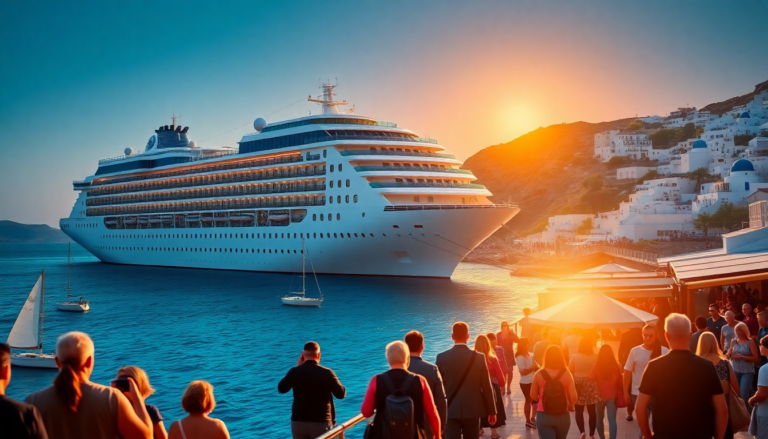Argomenti trattati
As summer approaches, the allure of the Greek islands calls to travelers yearning for sun-kissed shores, azure waters, and delectable culinary delights. But a recent development is reshaping this idyllic image. Starting in July, a new tax will be levied on cruise passengers—a strategic move aimed at managing the overwhelming influx of tourists and enhancing the sustainability of these treasured destinations.
Facing the Reality of Overtourism in Greece
Imagine this: you step off your cruise ship, greeted by the vibrant whitewashed buildings of Santorini or Mykonos, the enticing aroma of fresh seafood wafting through the air, and the promise of breathtaking sunsets. This picturesque scene, while captivating, is increasingly overshadowed by a troubling reality. Once serene havens, these islands are now inundated with tourists, especially during peak season. For instance, on a single day in August 2024, Santorini welcomed a staggering 20,000 visitors—an unsustainable figure that underscores the pressing challenges of current tourism practices.
In response to this mounting pressure, Greek officials are taking action. The introduction of a new cruise tax, effective July 1, is one such initiative designed to redistribute tourist traffic more equitably across the islands and enhance local infrastructure. But how will this change impact your travel experience?
Understanding the Cruise Tax Details
The newly established tax will vary depending on the season and island, reaching up to €20 during peak months for popular destinations like Mykonos and Santorini. To put this into perspective, last year, about 1.3 million cruise passengers visited these islands, which could translate into an estimated $45 million in tax revenue for the cruise lines alone. Greece’s tax structure will categorize fees into three tiers: €1 during low season, €3 during mid-season, and €5 during high season, with Santorini and Mykonos facing higher rates due to their popularity.
Originally set to launch in June, the tax’s implementation was delayed after seismic activity in Santorini temporarily halted cruise traffic. This pause has provided authorities the opportunity to refine their approach to managing tourist numbers while ensuring the islands retain their charm and character.
Encouraging Sustainable Tourism Practices
The dual purpose of the cruise tax is twofold. First, it aims to promote visits to less-frequented ports, encouraging travelers to explore alternative islands such as Zante and Antipaxos, which boast stunning vistas without the overwhelming crowds. For those seeking quieter experiences within the Cyclades, islands like Milo, Sifnos, and Naxos beckon travelers to uncover their beauty off-peak. Traveling outside of the summer months not only allows for a more tranquil experience but also fosters a deeper connection with local traditions and culinary offerings.
Secondly, the revenue generated by the tax will be funneled into modernizing the islands’ infrastructure and port facilities, which have felt the strain of heavy tourist traffic. This investment is crucial to ensuring that both locals and visitors can enjoy the islands sustainably, preserving their cultural integrity while enhancing the overall experience.
As we navigate these changes, it’s vital to remember that every dish, every sunset, and every stroll through the charming alleyways of the Greek islands tells a story. The new cruise tax isn’t just a financial burden; it’s an invitation to reflect on how we engage with these beautiful places, encouraging us to savor the rich history and culture that each island embodies.
In conclusion, while the new cruise tax may alter the travel dynamics in Greece, it presents an opportunity for a more sustainable approach to tourism. This change allows travelers to experience the islands in a way that respects both the local environment and its vibrant traditions. So, are you ready to explore the less-trodden paths of these enchanting islands?

